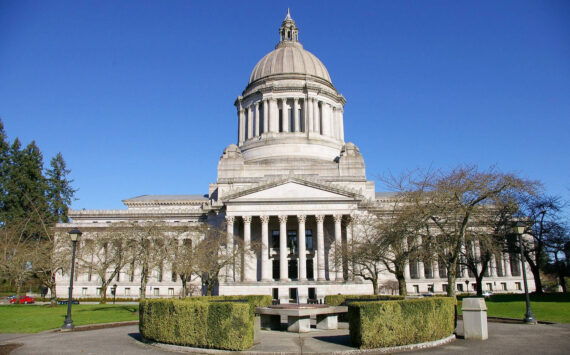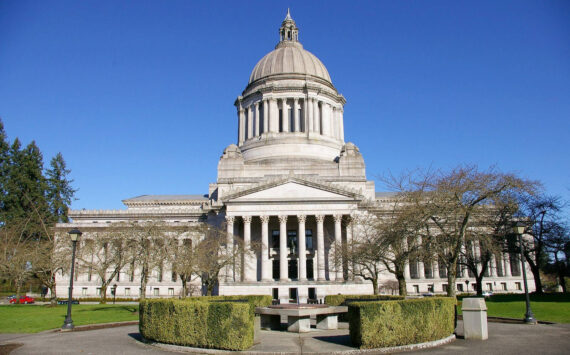Two years ago, Tacoma resident Peter Whitley took his kids to one of the citys neighborhood skate parks. A skateboarder for 30 years, Whitley was looking forward to spending some recreational time with his two sons both of whom, like many young people, had shown interest in the growing sport. Instead, what Whitley saw was an unmet need for skateboard parks in Tacoma.
They were a mess, recalls Whitley, referring to the citys three skate parks. The one closest to our house was two miles away. It had a ratty chain link fence, no trash cans — it just wasnt a place I wanted to be. I felt like there was a real inequity for skateboarders in Tacoma.
That experience inspired Whitley to form Tacomaskateparks.org, an organization that advocates for skaters and the creation of skateparks in the city. Today, the group has drawn support from key city leaders (including Councilmember Bill Evans), Metro Parks, and some downtown business leaders.
To be sure, Tacoma skateboarders havent always received local support. For many years, skateboarders typically squared off against downtown merchants and property owners over damage to sidewalks, streets, and stairways. While some downtown stakeholders wondered how to get skateboarders off the streets, skateboarders wondered where else they could go. A few years ago, the city considered an ordinance banning skateboarding altogether.
The milestone we may have reached, after a couple years of impasse between downtown property owners, business owners, and skateboarders, is that weve all started to dialogue about it, says Paul Ellis, director of metropolitan development at the Tacoma-Pierce County Chamber of Commerce. Ellis is familiar with some of the property damage left in the wake of skateboarders. At Columbia Bank headquarters downtown, he says, property damage by skateboarders has totaled $90,000. At Pacific Plaza, which opened earlier this year, concrete benches are already shredded and scarred. Similar damage can be seen on the UW Tacoma campus. And skateboard trucks have stripped purple paint off the railings along the steps to the Marriott.
Its a real concern, says Ellis, but it doesnt mean nobody can skateboard. It means we should open it up so people can do it while being responsible for what they do with their boards.
Marty Campbell agrees.
The skateboard community and the business community have stepped up and said, A ban is not going to work, says Campbell, president of the Downtown Merchants Group, and vice president of the New Tacoma Neighborhood Council. Its unfortunate and downright disrespectful when they are doing damage. But I think its because theres a lack of places for skateboarders.
Campbell recalls a time when merchants and property owners complained about skateboarders and called for an outright ban of their activities. A lot of people calling for the ban realized their nieces and nephews were all skateboarding, he says. They were asking for a ban that would affect their families. I think they realized how hard that would be.
Campbell would like to see more skateboarders downtown, and the city create spaces with skateboarders in mind. Many of the merchants like the skateboarders because they activate the streets, he says. In the case of Pacific Plaza — an open-air, concrete space with a waterfall, steps, and benches — he envisions an area cordoned off for skateboarders. Leave one section dedicated to skaters, he adds. You can skate here, but please respect the rest of the park.
Recently, the city and Metro Parks have made accommodations. Were trying to make parts of downtown a little more friendly to skateboarders, says Bart Alford, an urban planner at the City of Tacoma. He points to the citys work last year with Metro Parks and Tacoma Skate Parks to install a manual pad at Theas Park for skateboarders. One way to address the issue to provide opportunities for skateboarders to go where they are supposed to be skating, rather than ban it outright, says Alford. Were working with a group of people who represent a segment of the skating population, Metro Parks, and City Council to universally develop a way for skateboarders to have places in the city to skateboard. I think theres been kind of a concerted effort in that area.
Later this year, skateboarding amenities will be added near the south end of the Foss Waterway, according to Whitely. We decided to replicate the popular ledges at UW Tacoma and draw skateboarders away from the campus, he says.
Still, support for skateboarders isnt unanimous.
The business community has been mixed, admits Whitley — though he has met with the downtown Business Improvement Area to discuss efforts mitigate property damage. There seems to be a small portion who arent interested in mitigation. They just want to see the activity stopped. Im not sure how to handle that. We know there are still some frustrations. I think there are lots of years of resentment built up.
For some time now, Tacomans close to the issue have eyed the possibility of a skatepark near Brown & Haley headquarters. Supporters have argued placing a skatepark there would displace some of the areas illicit activities, create a centralized location for skateboarders, and attract more visitors to the Dome District.
Still, the area isnt the most aesthetically pleasing place in the city hidden away beneath an overpass on Interstate 705.
The appropriateness of the siting is important, says Ellis. Im not sure, when all is said and done, its a good idea. It wouldnt be very attractive to people who wanted to use it.
Whitley agrees the site isnt ideal. Its location near railroad tracks and heavy-haul traffic could make it a danger for young people. Whitley says his organization considered the location largely as an impetus to talk about legitimate spots. In the end, however, It wouldnt be a real community skatepark, he adds.
Instead, advocacy efforts are focused on creating a network of skateparks in existing Metro Parks locations. Were not advocating for a single skate park, adds Whitely. Were advocating for a whole system. We would like to see a skatepark in every neighborhood.
We dont want to relegate skaters to places where nobody else wants or places that are dangerous, says Lois Stark, chief planner at Metro Parks. She agrees that a single, downtown skatepark underneath I-705 isnt necessarily the answer. People who skateboard are engaging in legitimate forms of recreation. They deserve to have safe and clean facilities just like people playing baseball or playing any other recreational activity.
The goal of creating a network of skateparks was bolstered last November when voters approved an $84.3 million capital bond measure for Metro Parks. The department has allotted $750,000 for developing skateparks (that amount will likely grow through state and federal grants). This year, according to the departments bond implementation work program, Metro Parks will spend $100,000 (of a total $1.6 million) on the first phase of a master plan for improvements at McKinley Park, which calls for consideration of a skate park. Similarly, $1.5 million is allocated for improvements to Norpoint Park, including a nearby skate park.
Stark agrees with Whitleys earlier observation of Tacomas run-down skateparks. Until the bond was passed in November, we had not had a bond measure that would bring in cash for nearly 20 years, she says. Now we have funds again and we want to address [it].
— SIDEBAR ARTICLE —
Metro Parks currently operates three skateparks in Tacoma, including:
Stewart Heights Park / 5900 East D / 12,000 square feet / Opened in January 2002
Norpoint / 4818 Nassau Avenue NE / 3,750 square feet / Opened in Summer 1999
Heidelberg Davis Park / 4500 South 19th Street / 8,000 square feet / Opened in Fall 1996
For more information about Tacoma skateparks, visit the following Web sites:
Metro Parks — http://www.metroparks.com
Tacoma Skate Parks —
http://www.tacomaskateparks.org








